Near the end of 2016, I made a prediction that has yet to be disproven. I guessed that the most well-attended commemorative events of 2017 would have nothing to do with Canada’s Confederation.
As political, racial and environmental crises reach a boiling point across North America, vigils and public actions have drawn unprecedented crowds who seek to mourn, think and pray as a collective. In Halifax, it seems only appropriate that many public galleries have also become sanctuaries and gathering places, featuring exhibitions that deal with grief and commemoration.
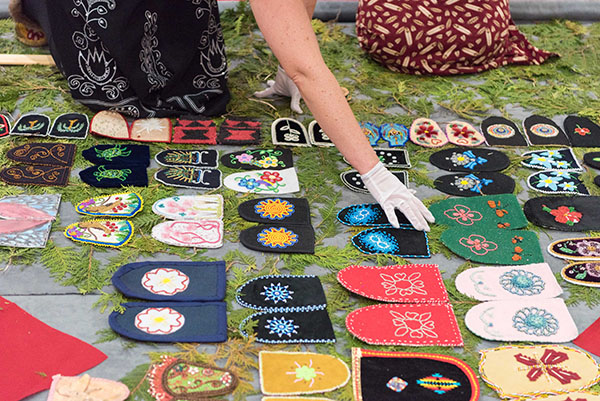 Installing “Walking With Our Sisters” at MSVU Art Gallery, January 2017. Photo: Katie Nakaska.
Installing “Walking With Our Sisters” at MSVU Art Gallery, January 2017. Photo: Katie Nakaska.
Mount Saint Vincent University Art Gallery has been the only stop in the Atlantic provinces for “Walking With Our Sisters,” an exhibition that currently has 29 scheduled tour dates. This installation features more than 1,700 vamps (moccasin tops) created by 1,300 artists as a memorial to murdered and missing Indigenous women, girls and two-spirit people. Some vamps are intricately layered with beading and embroidery, some are mostly bare with only a clean beaded border, and others are richly decorated with puffy paint and rhinestones. Visitors remove footwear, participate in a smudging ceremony and are given a cloth-bound tobacco pouch before being welcomed to walk a path alongside the unfinished moccasins.
This expansive memorial became a gathering site for families of victims across the Atlantic, from Mi’kmaq, Maliseet, Inuk, Inuit and Beothuk territories, not to mention across Turtle Island. At the centre of the installation, which closed February 1, there was a section reserved for new vamps created in the region since the exhibition was welcomed to MSVU Art Gallery. By maintaining a continued focus on the families of murdered and missing Indigenous women, the memorial felt both regionally specific and transnational in breadth.
“Walking With Our Sisters” is the antidote to immersive installation art—it doesn’t rely on spectatorship and it doesn’t make the visitor an actor in an artist’s cabaret. The gallery becomes a place for visitors to contribute on an emotional and spiritual level: offering prayer, paying respects and committing to memory the stories of women who are often reduced to statistics.
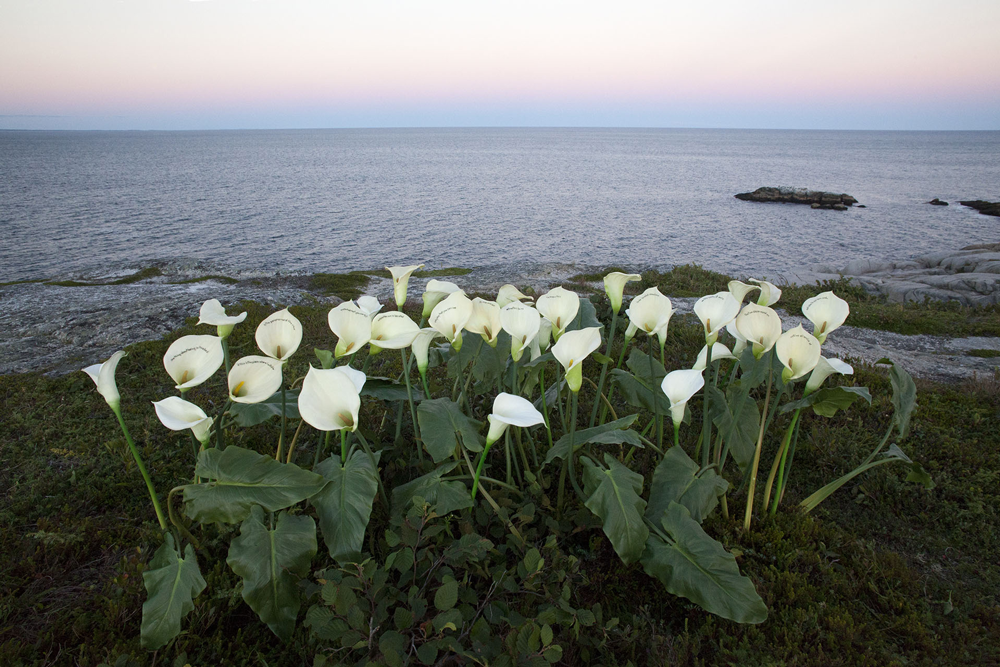 Lorraine Field, The Landscape Listens, 2016.
Lorraine Field, The Landscape Listens, 2016.
Focusing on an isolated experience of grief, Lorraine Field’s exhibition “Alas: A Visual Lament” serves as an elegy to her late husband. The three series of photographs on display at Saint Mary’s University Art Gallery are visual articulations of her grief, showing glossy clusters of artificial black flowers and dark, inky feathers superimposed on landscapes and the artist’s own body.
The Landscape Listens uses floral imagery in a way that is nuanced and romantic, showing a bed of artificial calla lilies each embroidered with lines of a poem written by Field’s husband. The black flowers that sprout from fields and lakes in Shadows Hold Their Breath impose a heavy, sinking stillness on the landscape, not to mention the gallery space. Although these pieces are thoughtful and layered, any nuance is lost in Self Portrait in Black Roses. This large self-portrait shows the artist lying in an invasive bed of black flowers, and her bereavement becomes the loudest pain in the gallery. Half of the exhibition, which closes March 5, centres the artist’s loss in a way that allows for quiet contemplation, while the other half shows a sadness that is imposing and aggressive—not unlike grief itself.
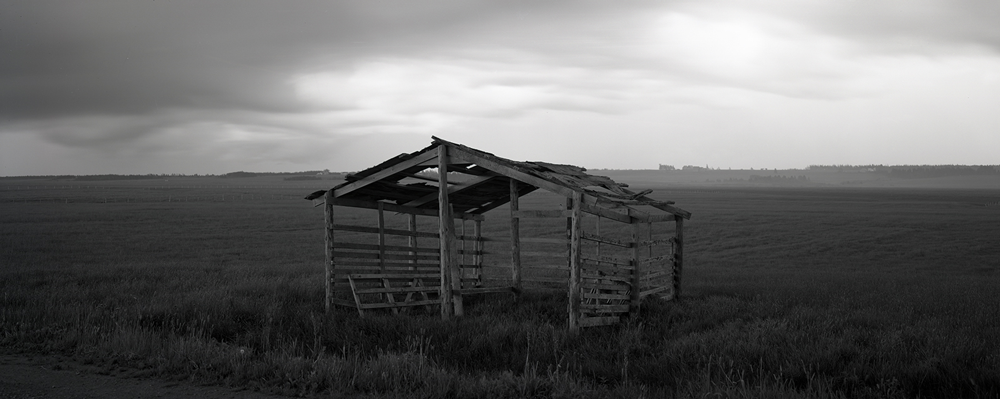 Thaddeus Holownia, Shelter, Jolicure, NB, 1993.
Thaddeus Holownia, Shelter, Jolicure, NB, 1993.
Field’s approach to photography is representational: she uses the camera as a tool to make material an image that does not exist in nature. She finds her counterpoint in Thaddeus Holownia, whose expansive body of work is on display at the Art Gallery of Nova Scotia until May 28. Unlike Field, Holownia aims to capture landscapes without imposing himself upon them, and the AGNS’s focused survey, titled “The Nature of Nature” places him firmly within the canon of Canadian documentary photography.
At times the content is haunting, holding the loneliness of expansive nature in one hand, and traces of human intervention in the other. The exhibition maintains neutrality toward environmental issues raised in photographs such as Anatomy of a Pipeline (1999–2001), which documents the construction of the Sable Gas Pipeline. It seems impossible to express neutrality toward a topic as pertinent as pipeline construction, but that impartiality is characteristic of Holownia. Nature, in both splendour and tragedy, reveals itself to his camera.
Holownia’s photography is about slow, focused looking, and that’s exactly what it demands from the viewer. Consuming two floors and covering more than 40 years of artistic production, it is without a doubt a demanding exhibition.
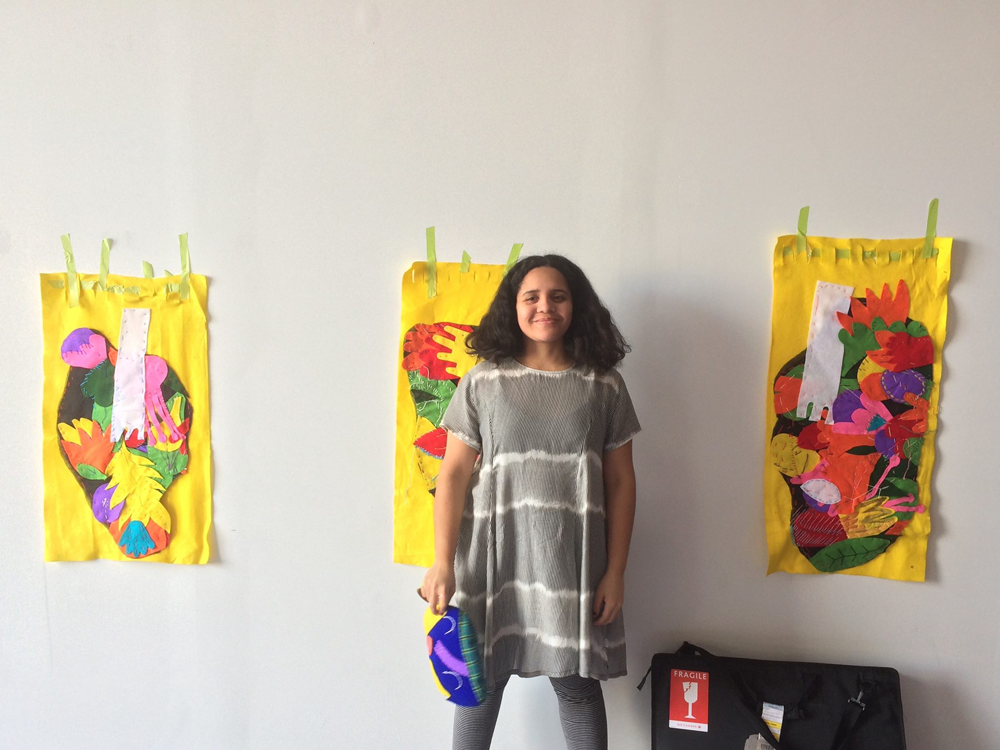 Lido Pimienta is taking over the Khyber Centre for the Arts from February 6 to 9, 2017. Courtesy Shaya Ishaq.
Lido Pimienta is taking over the Khyber Centre for the Arts from February 6 to 9, 2017. Courtesy Shaya Ishaq.
Many arts institutions in Halifax this season have become spaces to look, reflect and even mourn. Meanwhile, the Khyber Centre for the Arts has become a centre for discursive resistance, hosting a number of dialogue-based learning circles, including a Black Lives Matter reading group organized by Shaya Ishaq and Jade Byard Peek.
Collective mourning is not always solemn, and not all sanctuaries are silent. In her recent workshop at the Khyber, visiting artist-curator Lido Pimienta commemorated the suffering of refugee, Indigenous and marginalized communities in Canada through loud, powerful humour. Until February 9, Pimienta has taken over the Khyber and made it a studio for artist talks, art-making, recording and performances. In her workshop titled “Take Their Money Not All the Space!” the Toronto-based, Colombia-born artist advised participants to take lessons from female hustlers when navigating Canada Council grants. As quickly as she generates laughter, Pimienta silences a room, stressing that those with privilege ought to make space for those marginalized in arts spaces, as well as those disproportionately represented in the prison system.
There are times at vigils, protests and commemorative events when it is prudent for those who hold privilege to step aside. There are also times when we are all called to use our bodies as votes—to become a number in a crowd so that the crowd gathers steam. Be it in commemoration, in support or in resistance, collective action involves leveraging privilege while holding those in power accountable. Whether it is through collective remembrance in an artist-run centre, a smudging ceremony at a memorial or quiet prayer before a photographed landscape, commemoration comes in many different forms.
Amanda Shore is currently the curator-in-residence at the Centre for Art Tapes, and the bar service manager at Art Bar + Projects in Halifax, Nova Scotia.

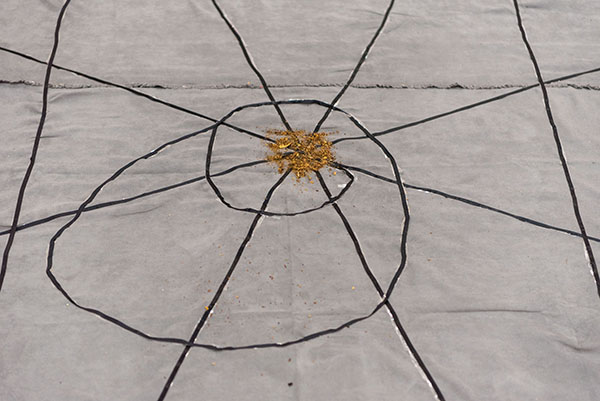 “Walking With Our Sisters” (detail), at MSVU Art Gallery, 2017. Photo: Katie Nakaska.
“Walking With Our Sisters” (detail), at MSVU Art Gallery, 2017. Photo: Katie Nakaska.







